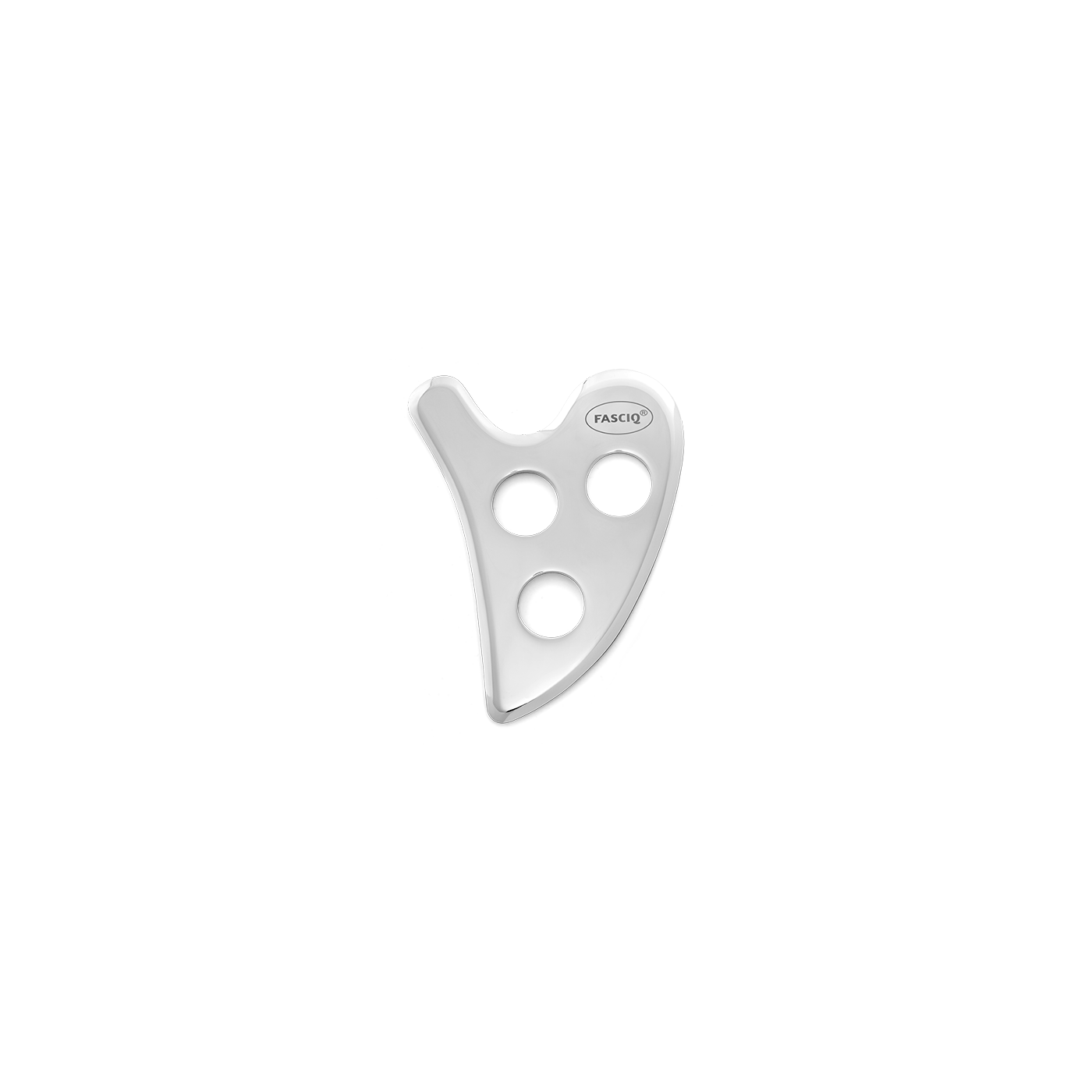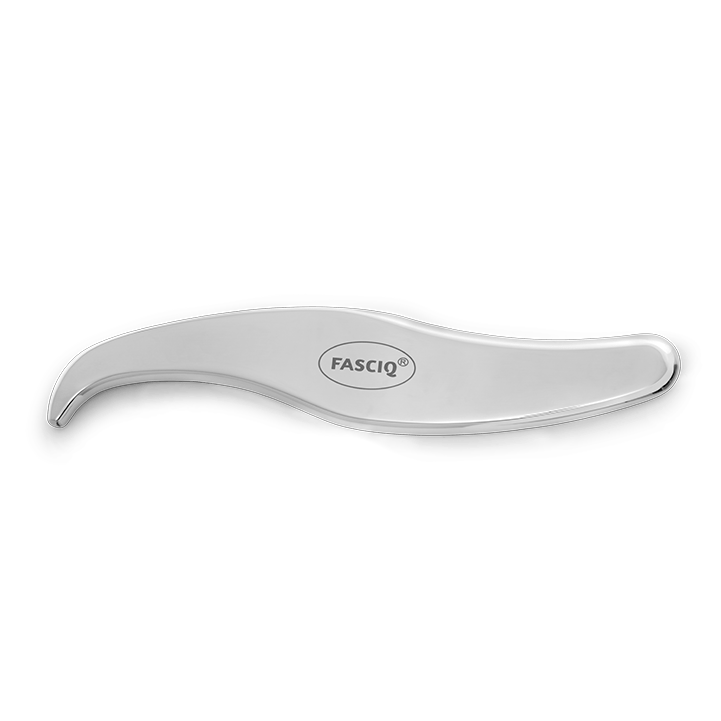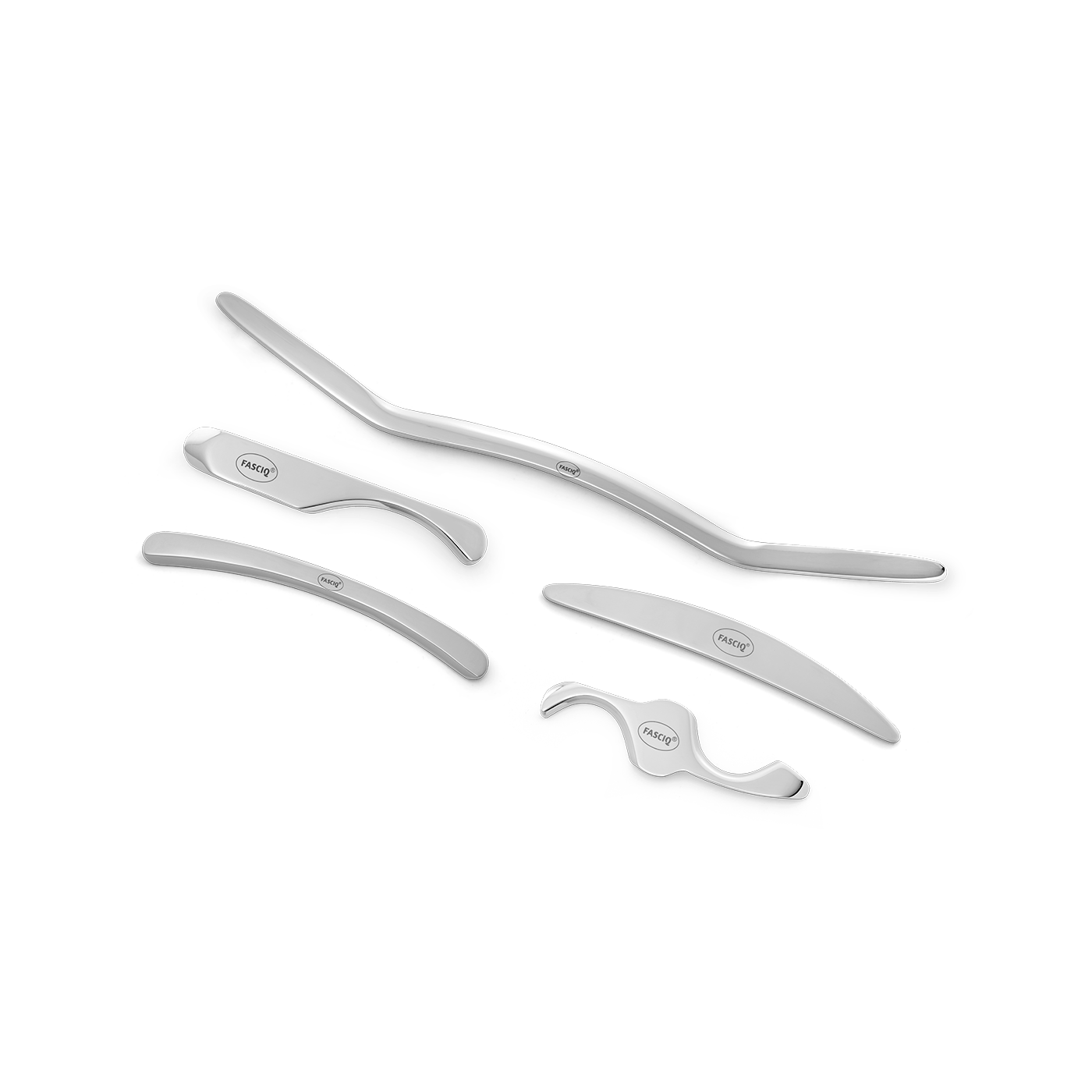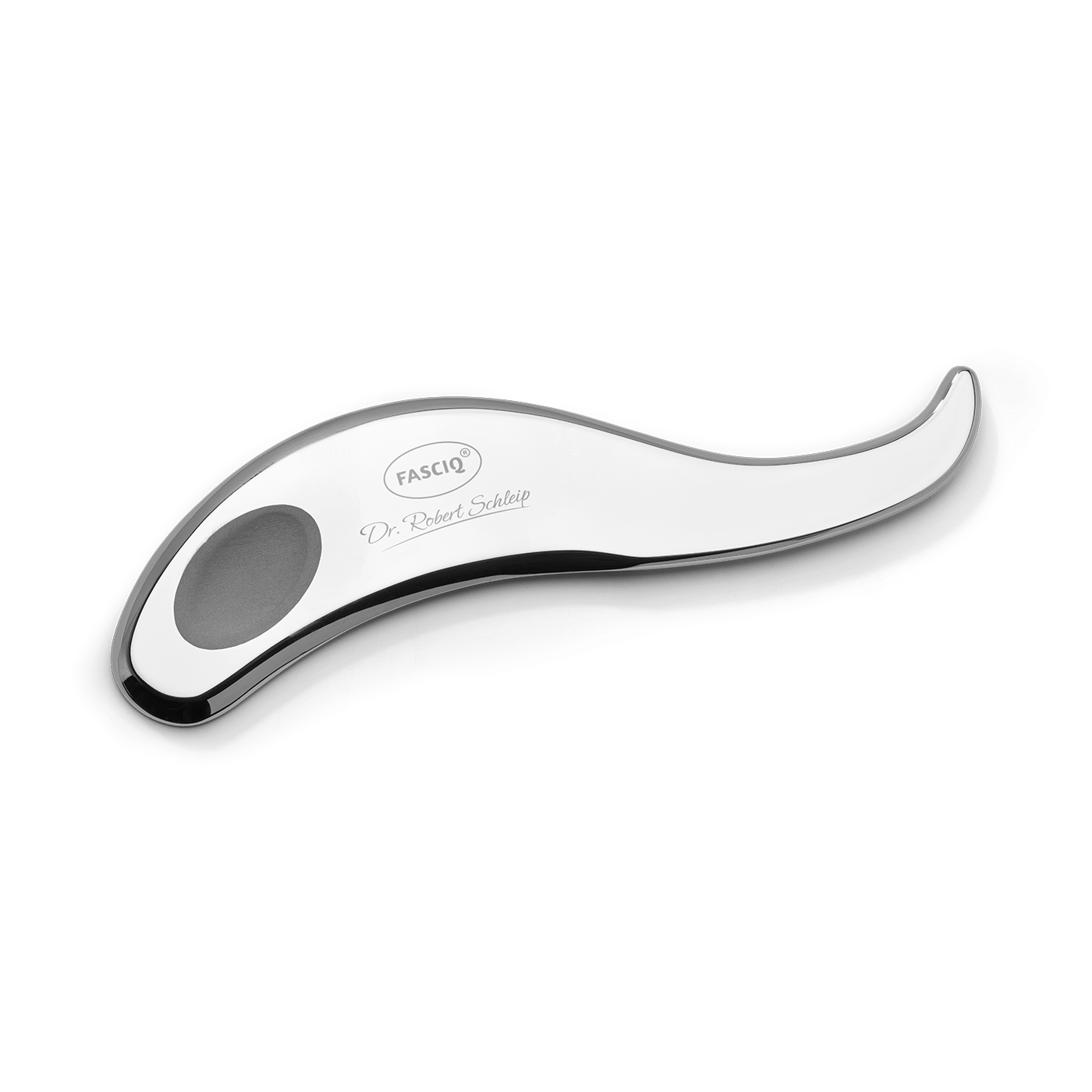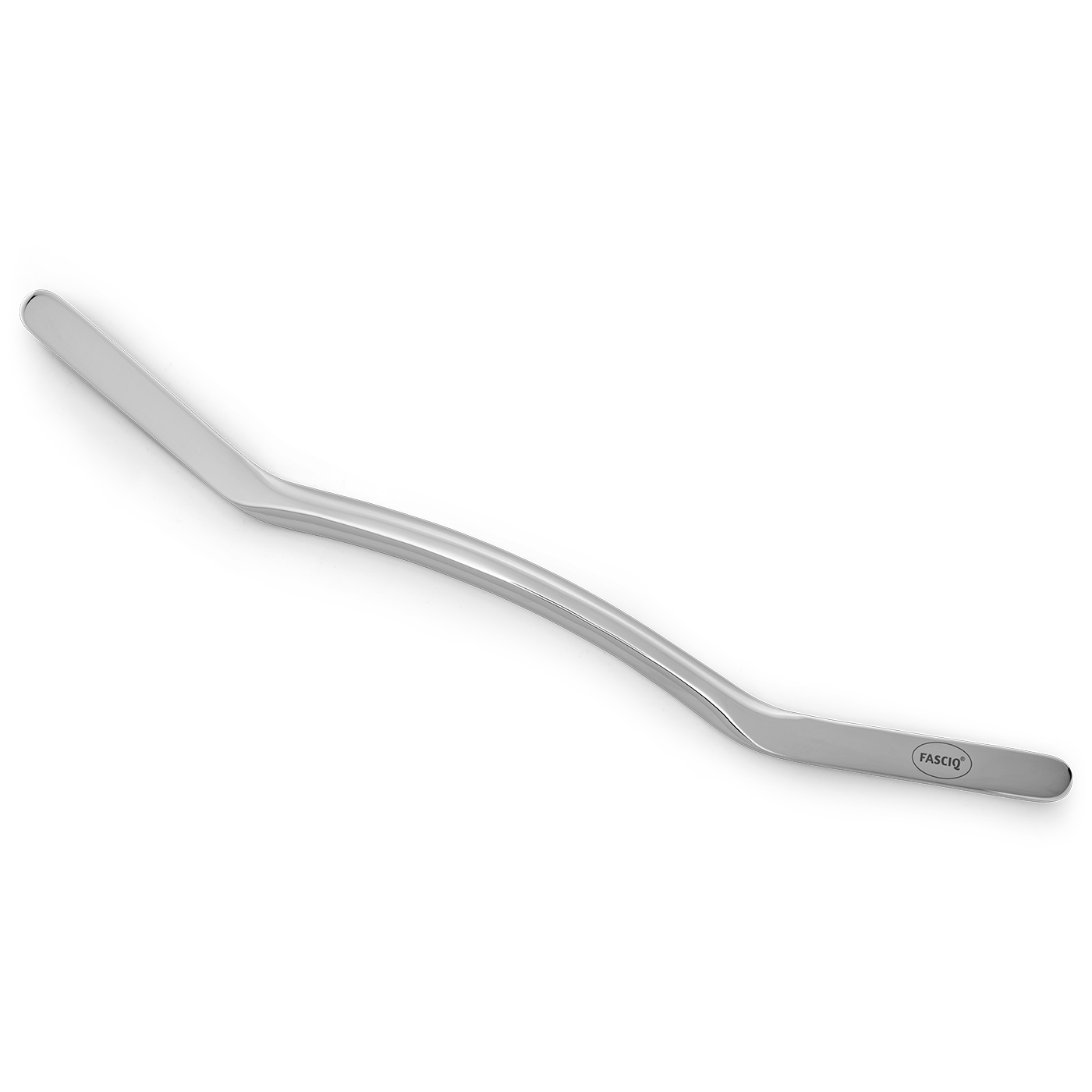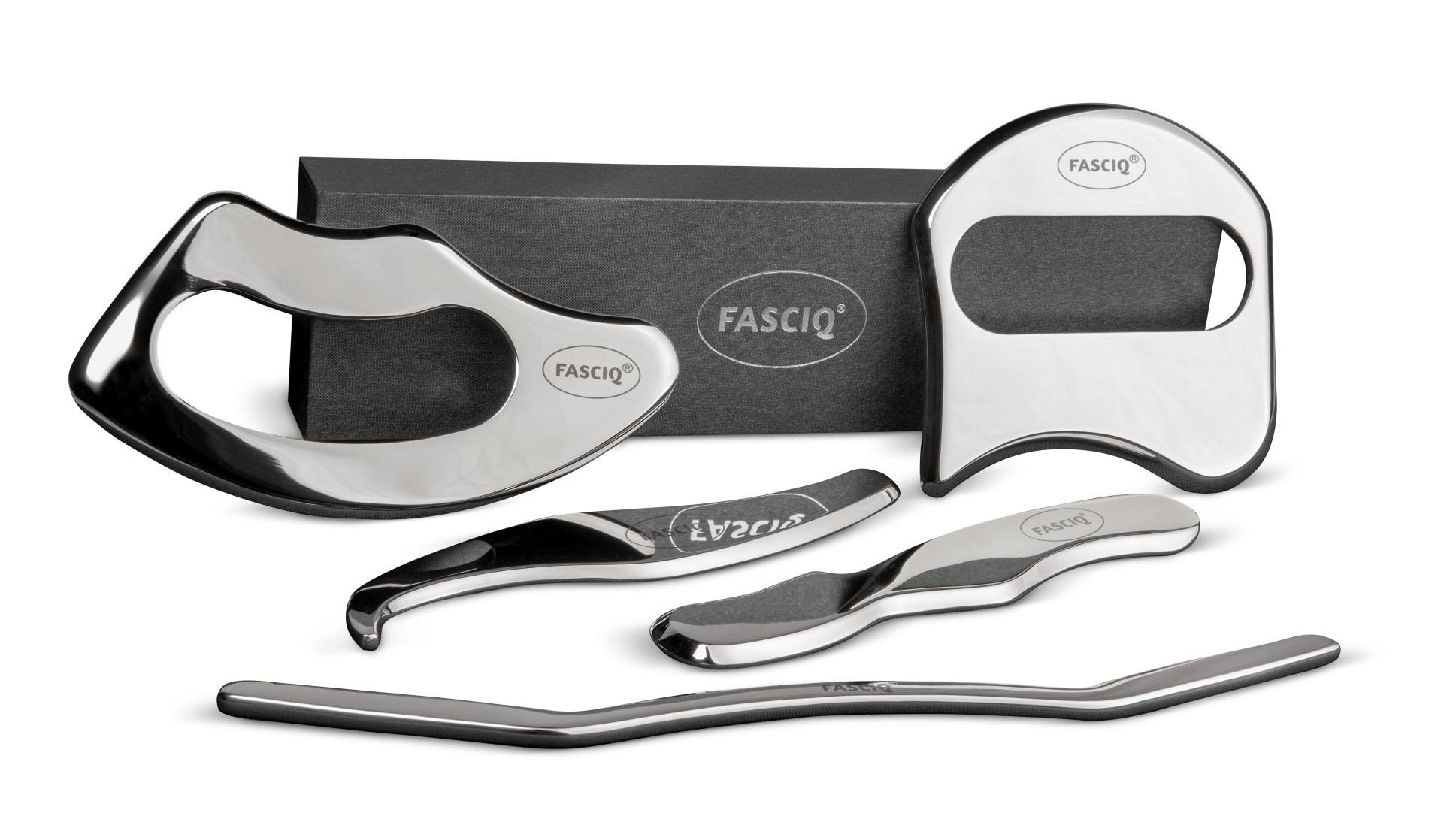Are you curious about the benefits of Instrument Assisted Soft Tissue Mobilization (IASTM) therapy? If so, you may be wondering how to choose the right tool for the job. With so many options available on the market, it can be overwhelming to determine which IASTM tool is the best fit for your needs. In this blog post, we’ll explore the key factors to consider when selecting an IASTM tool, so that you can make an informed decision and provide effective treatment for your clients.
1. Choose stainless steel
When selecting an IASTM tool, consider the material type. Plastic, ivory, jade, and stainless steel are all options, but medical-grade stainless steel is widely considered the superior choice. All of FASCIQ’s IASTM tools are made of medical-grade stainless steel. Its high tensile strength offers increased durability and sustainability over time, while also remaining impervious to damage from massage oils or creams. Additionally, stainless steel instruments provide enhanced tactile feedback, which can help improve your treatments and optimize effectiveness, particularly when treating larger areas. You will receive a lifetime guarantee on all of the items.
2. Look for ergonomic design
Some features to look for in an ergonomic IASTM tool include a comfortable grip, a balanced weight distribution, and an intuitive design that fits naturally in your hand. Additionally, some tools may have features like contoured edges or adjustable handle lengths to further enhance your comfort during use.
Overall, selecting an IASTM tool with ergonomic design will not only benefit your physical well-being but also improve the quality of treatment you can provide for your patients. By prioritising ergonomics, you can ensure that you can work efficiently and comfortably, while also delivering effective therapeutic relief to your patients. If you’re unsure where to start your search, ask your colleagues or healthcare professionals for recommendations. By taking the time to find an ergonomic IASTM tool that suits your needs, you can enhance your practice and provide better care to your patients.
3. Choose the right shape or size
When choosing an IASTM tool, it’s important to consider the shape and size of the tool. Depending on the area of the body you intend to target, you may need a larger or smaller tool. For example, larger tools like the Large Handlebar from FASCIQ may be ideal for treating the back or pectoral muscles, while smaller tools may be better for areas like the hands, feet, forearms, and calves. FASCIQ offers a range of tools with concave and convex shapes that are designed to target different areas of the body. Investing in a set of tools in various sizes and shapes can be helpful to ensure that you have the right tool for each area of the body. Not sure which shape or size to go for? We also offer toolsets, small and large, with various shapes and sizes to alternate between tools.
4. Bevelled edges matter
When selecting an IASTM tool, it’s essential to consider the number of bevelled edges as it plays a critical role in the tool’s functionality. The bevelled edge is the angled surface that runs along the edge of the tool, and it determines how the tool interacts with the patient’s skin during treatment. A single-bevel tool is perfect for targeting deeper tissue as it allows for deeper penetration during treatment. This type of tool is ideal for treating areas with thick muscle layers, such as the back or the glutes. On the other hand, double-bevelled tools are more versatile and can be used in any direction, making them perfect for treating a wide range of areas. This type of tool is ideal for treating more delicate areas, such as the face or the neck, where precision is essential. Therefore, it’s crucial to select the right tool for the targeted goals of the treatment based on the number of bevelled edges.
Take for example the Wave that we developed with Dr. Robert Schleip from the Fascia Research Society. He was personally involved in coming up with the idea of the tool’s shape and the ideal edges for working with the tool. The Wave is designed with a hook, and a variety of sharp and smooth, convex and concave edges as well as a thumb sizes indentation distributing the pressure across the entire surface area of the thumb to reduce strain on the thumb when adding pressure.
5. Don’t skimp on price
While the cost of IASTM tools is an important consideration, it’s important not to skimp on quality. Cheaper tools may be more affordable upfront, but they may not hold up well against repeated use and may need to be replaced frequently. Investing in high-quality, precision-made stainless steel tools designed for high efficacy may cost more initially, but it’s an investment that pays off in the long run. By choosing high-quality tools, you can provide your patients with effective treatment while protecting the health of your hands. Remember, you get what you pay for, and investing in quality tools is worth it for both you and your patients. Plus, FASCIQ IASTM tools come with lifetime guarantee, so if there is something wrong with it, simply reach out and we will sort it out for you!
About FASCIQ’s IASTM tools
If you’re a healthcare professional, athlete, or fitness enthusiast looking for effective soft tissue treatment and pain relief, look no further than FASCIQ. Our collection of 9 IASTM tools in various shapes and sizes and price ranges, as well as 2 different toolsets, are made from high-quality materials that ensure their durability and ease of cleaning. They all come in a luxury box as well as a fabric bag that keeps it nice and save whilst carrying it around to treatments.
From treating injuries to improving range of motion, our IASTM tools offer a multitude of benefits that can enhance your overall wellness. Discover our range today and take the first step towards a healthier, pain-free tomorrow!

